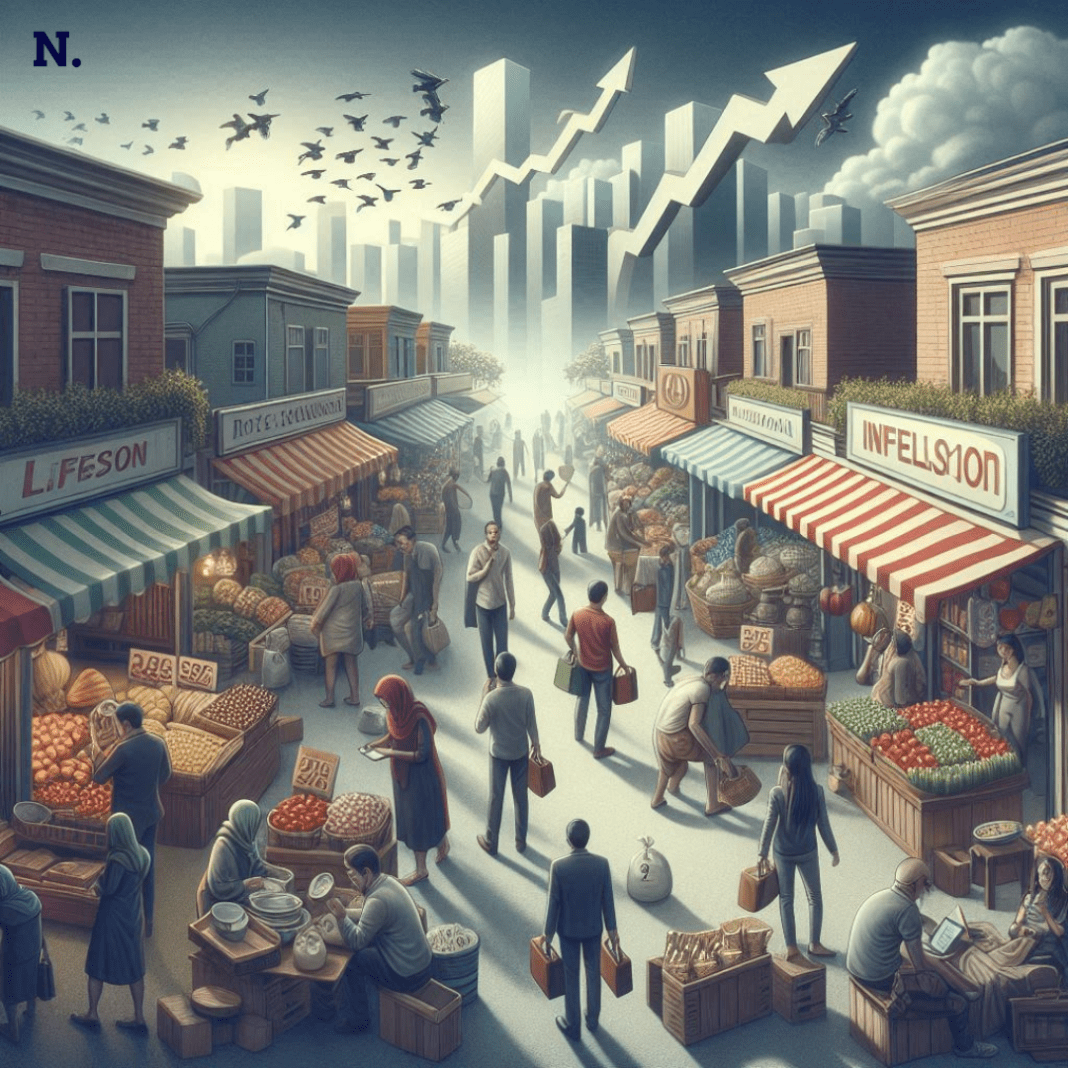India’s economic growth slowed significantly to 5.4% in the July-September quarter of FY25, marking its weakest performance in seven quarters. This decline stands out when compared to the 6.7% growth in the previous quarter and the 8.1% recorded in the same quarter last year. The slowdown has been attributed to several factors, including persistent inflation, sluggish private consumption, and weaker corporate earnings, creating a challenging economic environment.
Private consumption, which constitutes a significant portion of India’s GDP, grew by just 6%, down from 7.4% in the previous quarter. The surge in food inflation, which hit 10.87% in October, further constrained household budgets, limiting their ability to spend on non-essential items. Sector-wise, agriculture emerged as a bright spot, growing by 3.5% year-on-year, up from 1.7% a year earlier. However, the manufacturing sector showed a sharp decline, registering just 2.2% growth compared to a robust 14.3% in the previous year. The mining sector, which had shown positive growth trends earlier, slipped into contraction, shrinking by 0.1%.
The data reflects a broader economic slowdown, highlighting significant pressure on key sectors that traditionally drive growth. The challenges extend beyond surface-level indicators, pointing to deeper structural and cyclical issues that require attention.
Factors Driving the Economic Challenges
India’s current economic struggles stem from a combination of cyclical pressures and underlying structural challenges that have persisted over time.
Private Consumption Woes
High borrowing costs and stagnant wage growth have significantly dampened consumer spending. Over the past year, urban wage growth has consistently declined, now sitting well below the pre-pandemic five-year average of 9%. This prolonged reduction in income levels has gradually weakened urban consumption patterns, reducing household disposable incomes. Many families have prioritized essential goods and services, pulling back on spending for discretionary items such as electronics, clothing, and entertainment.
The rural economy, which is traditionally more resilient during economic slowdowns, has also faced challenges. Although rural demand has shown some recovery, the overall consumption trends remain subdued, reflecting the combined impact of inflation and lower income growth across demographics.
Weak Corporate Earnings
Corporate India has faced one of its weakest quarters in the last four years. Earnings growth for companies covered in Q2 FY25 saw a 1% year-on-year decline, while Nifty-50 companies recorded a modest 4% year-on-year growth. This represents a sharp slowdown compared to the robust 21% compound annual growth rate (CAGR) seen between FY20 and FY24.
Weak corporate earnings have had a domino effect on business sentiment and investments. Companies have scaled back on expansion plans, deferred hiring, and limited capital expenditures due to concerns about profitability. This has further dampened economic momentum, as businesses play a crucial role in driving employment and investments in the economy.
Export Challenges
India’s exports, which are vital for economic stability, have faced a significant slowdown due to weakening global demand. Countries worldwide are grappling with economic challenges, leading to reduced demand for Indian goods, particularly in sectors like textiles, automobiles, and electronics.
At the same time, while exports have slowed sharply, imports have moderated at a less dramatic pace, adding to the trade imbalance. The weaker export performance has further weighed on the GDP, reducing the contribution of trade to overall growth during the quarter.
Policy Moves and Emerging Trends
The Indian government and the Reserve Bank of India (RBI) have taken note of the challenging economic environment and are working on multiple fronts to address the slowdown.
Infrastructure Spending
The government has allocated a $576 billion budget for infrastructure development. This substantial investment aims to create jobs, boost economic activity, and improve overall investment sentiment. By enhancing transport networks, building smart cities, and upgrading logistics infrastructure, the government hopes to address long-term bottlenecks and stimulate demand in related industries like steel, cement, and construction.
Financial Reforms and Sectoral Incentives
To attract foreign investments and promote domestic industries, the government is exploring reforms such as raising the foreign direct investment (FDI) cap in insurance from 74% to 100%. This move is expected to draw international capital into the sector, providing a much-needed boost. Additionally, the government is introducing incentives for electric vehicle (EV) manufacturers to support the transition to greener mobility. By promoting EVs, the government also aims to address urban pollution concerns while supporting a high-potential sector that could create new job opportunities.
Monetary Policy Adjustments
Bond yields and swap rates in India have shown a steady decline, signaling expectations of easier borrowing conditions in the near future. While inflation remains a concern, the RBI is considering indirect measures to boost liquidity and stimulate economic activity.
One such measure could be a reduction in the Cash Reserve Ratio (CRR), which is the percentage of a bank’s deposits that must be held in reserve. Lowering the CRR would allow banks to lend more money, injecting liquidity into the economy without directly cutting interest rates. This strategy provides a balanced approach to addressing both inflation and the need for growth.
Agriculture and Rural Demand
A strong Kharif crop has provided much-needed support to the agricultural sector, which has shown steady growth despite broader economic challenges. Additionally, rural markets are beginning to show signs of recovery, with demand for basic consumer goods and farm equipment increasing. This rural rebound is expected to partially offset the slowdown in urban consumption, providing some stability to the economy.
A Complex Economic Landscape
India’s economic trajectory during the second quarter of FY25 highlights the interplay of multiple challenges, including inflation, weak corporate earnings, and declining exports. While certain sectors, such as agriculture and rural markets, have shown resilience, the broader economic slowdown underscores the need for continued strategic interventions. The government and the RBI are taking steps to address these challenges through targeted reforms, infrastructure investments, and monetary policy adjustments, aiming to strengthen the economy’s foundation amidst challenging conditions.





